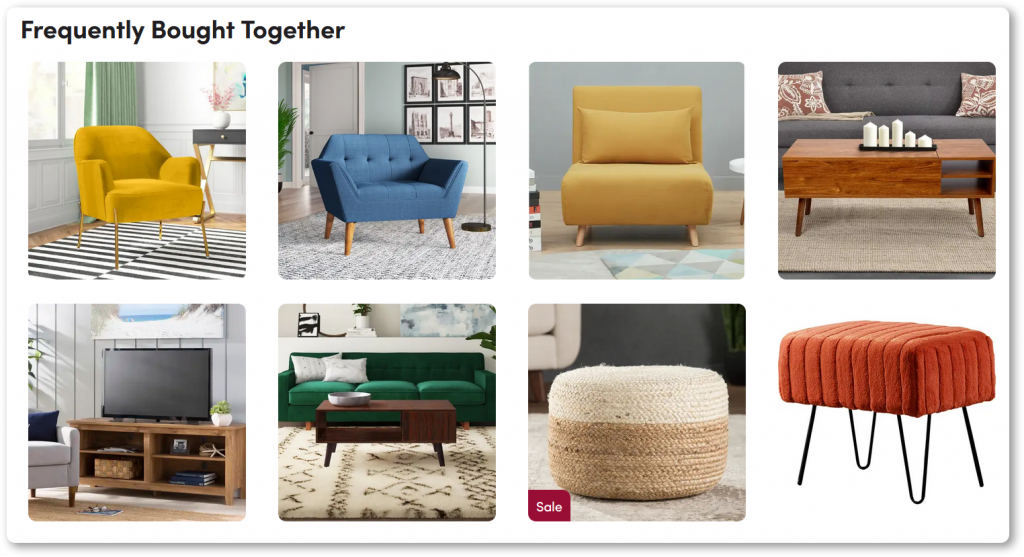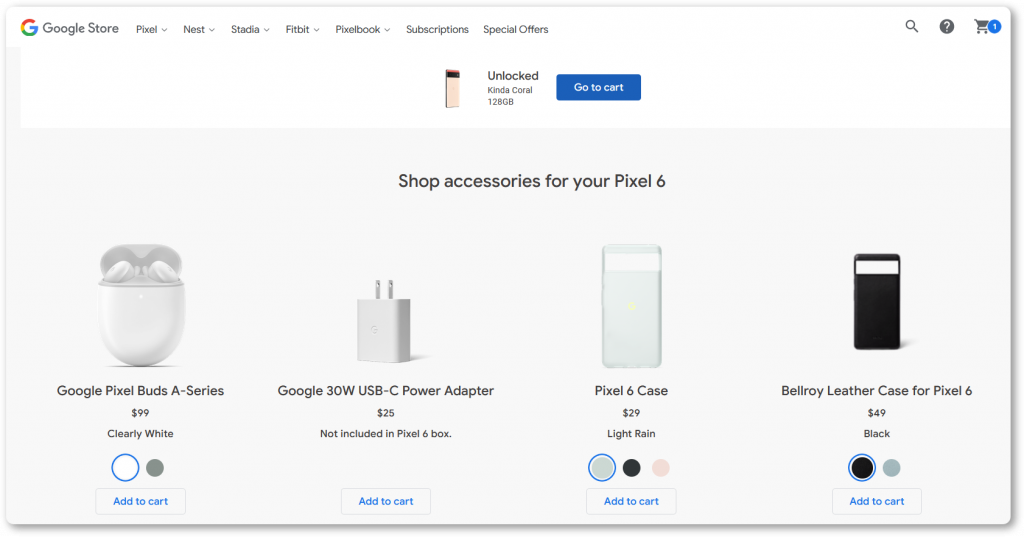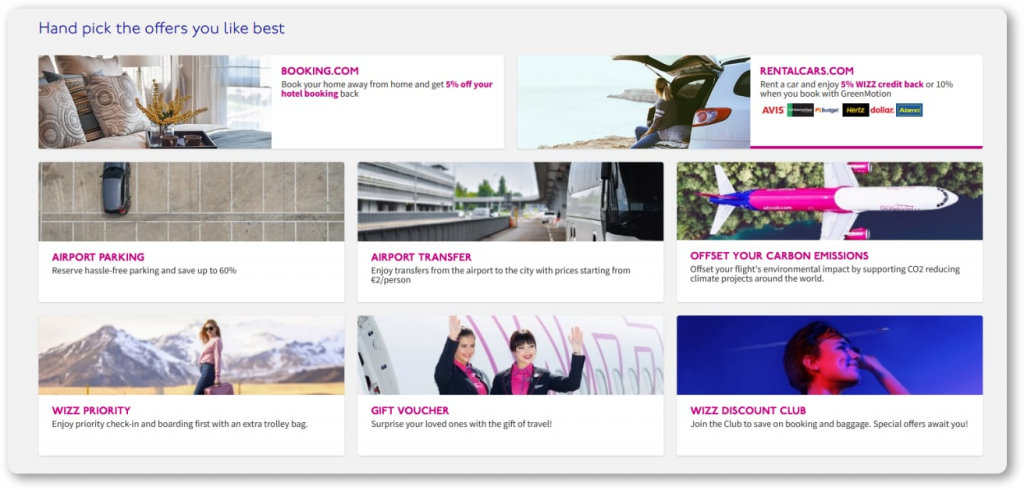Cross-selling
Cross-selling and upselling are equally effective marketing techniques to increase sales and customer loyalty. However, these two tactics are often confused.
To avoid confusion right away, let’s define each of these practices first and then dwell on cross-selling in more detail. In addition, enjoy some tips to boost cross-selling campaign effectiveness and look at the examples of how to implement them using email automation tools.
What is cross-selling?
Cross-selling is an offer of additional goods and services relevant to the purchase. Classic cross-selling examples are a seller of toothpaste offering to buy a toothbrush, a fast-food restaurant offering a dessert in addition to the main course, or a bank subtly mentioning insurance when you’re applying for a loan.
But it’s not for offline sellers only!
Here are some cross-selling examples common in the e-commerce world:
- Online stores often offer several products as one set, which you can purchase at a discount. For example, when buying a sofa in a furniture store, you’ll see a “Complete the set” option that shows other pieces of furniture related to your purchase;

- Some online stores suggest accessories or add-ons that make your purchase more complete. For example, you’ll be offered headphones, a case, or a memory card when buying a smartphone;

When booking a flight, you’ll also be offered a hotel room, car rental, and other travel-related services;

- When an advertising agency builds a website for you, it won’t forget to offer SEO-optimization and copywriting services to create content for the website once it’s ready;
- When you buy a sales automation solution, you can be offered additional integrations with your favorite apps, educational courses, or individual product training with a qualified company professional.
What is the difference between cross-selling and upselling?
Unlike cross-selling, upselling doesn’t imply an additional offer to a product/service but aims to sell either the same product in a larger volume or a more expensive version of the same product.
That is, a toothpaste seller will offer a larger toothpaste tube, the main dish in the restaurant will turn into the XXL version, and the agency, instead of a three-section landing page you originally wanted to see, will recommend you a full ten-page website.
Two tactics, one goal
Both marketing tactics are used to hit one target — to earn more revenue from one purchase. And both can be very effective when used correctly because almost every customer has up to 30% more money they are ready to spend on a particular purchase.
That’s why correctly managed interaction with customers is crucial. It means tracking sales leads, organizing customer data, and nurturing prospects at the right time at all sales funnel stages. Here, modern sales management solutions can help a lot so that you won’t miss out on any critical sales information.
Cross-selling methods, to name just a few
In offline sales, sales personnel are trained to competently recommend complementary products/services to their customers. Many brands with a vast product assortment prepare “sales matrices:” special cards showing auxiliary products that match the main product. This greatly facilitates the work of sellers and reduces the risk of irrelevant cross-selling offers.
In online sales, social media are often used to cross-sell complementary items based on the customers’ last purchases. So, if you’ve recently purchased a pair of sneakers, don’t be surprised to find lots of offers of other sports items in your social media feed.
However, a much more personalized and attractive “after purchase” cross-selling method is automated email campaigns.
Email automation to help boost your cross-selling campaign effectiveness
Don’t expect the client to know about the benefits of an additional accessory or product if you don’t inform them about it. You can successfully implement your cross-selling campaigns via email marketing through:
- Customer list segmentation, which allows you to predict what your clients may need in the future. Split customers into subgroups based on the products/services they’ve already bought, and create a customer portrait of each of them. Then develop personalized content about additional products each of the segments might be interested in;
- Mailings with proposals to supplement an already completed purchase. Typically, such follow-up messages contain data about a customer’s previous purchase and detailed information about related products/services. It’s appropriate to send these emails at intervals of 1-2 weeks. These are pretty voluminous mailings, and it’s impractical to do them manually. Email automation can handle this task with ease!
Speaking of follow-up messages, we’ve also prepared a few tips that will help you craft a solid cross-selling offer:
- Use the power of other people’s opinion
You can build recommendations based on the statistics of other customers’ purchases under the “Frequently bought together” heading or based on the interests of a particular client. Demonstrate which related products the manufacturer recommends and highlight them with a special badge “The manufacturer’s choice.” - Create a scarcity effect
Show items relevant to a previously purchased product that are in exceptionally high demand and are sold out fast. You can also note that these products are rare, thereby stimulating the buyer “Not to miss a chance.” - Add call to action (CTA)
A CTA should be short, distinct, yet unobtrusive. The customer should know that you do your best to help them find great opportunities and provide professional assistance to make their life more comfortable.
Wrapping up: Personalized email drip campaigns in cross-selling
Nobody’s interested in receiving standardized emails from a bot these days. Personalization is the key when bulk emailing. You shouldn’t send duplicate emails to everyone who bought the same product, and you’d better analyze the purchase history and create content accordingly.
Personalize your emails as much as possible to give them a human touch. Snov.io Email Drip Campaigns tool provides an excellent opportunity to personalize emails with creative and varied templates.
The text can be modified to accommodate your needs, and the recipients’ names will be substituted automatically. The more variables you use, the more your emails differ, the more chances are that the addressee will open and read your message. In addition, your options to be blacklisted as a spammer will decrease dramatically.

















